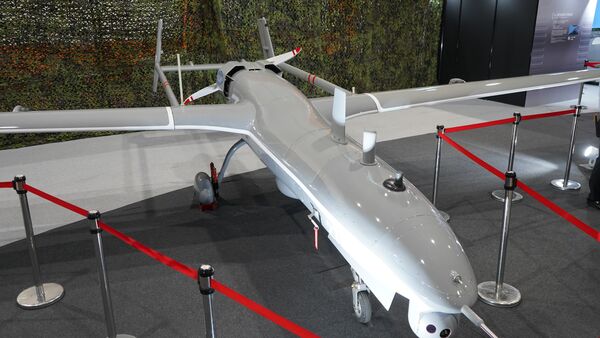
The NCSIST Albatross II, pictured above from TADTE 2023, has an endurance of 16 hours with a range of more than 300 km. (Janes/Kapil Kajal)
Taiwan's National Chung-Shan Institute of Science & Technology (NCSIST) displayed 10 unmanned aircraft systems (UASs) at the Taipei Aerospace & Defense Technology Exhibition 2023 (TADTE 2023) held in Taipei from 14 to 16 September.
The showcased UASs included Albatross II, Cardinal III, Image Guidance, Position Guidance, Decoy, Anti-Radiation, Tactical Short Range, Loitering Unmanned Aircraft Type 1 and II, and Teng-Yun.
According to NCSIST, Albatross II is a long-range, long-endurance maritime UAS integrating artificial intelligence (AI) to complete intelligence, surveillance, and reconnaissance (ISR) tasks.
The system is equipped with a dual redundant digital flight control computer (DFCC), multipayload flexibility, automatic identification system (AIS), maritime surveillance radar, and automatic take-off and landing mechanism.
The system has an electro-optical/infrared (EO/IR) payload and an endurance of 16 hours with a range of more than 300 km.
A spokesperson for NCSIST told Janes at the exhibition that the Republic of China Navy (RoCN) will conduct an initial operational test and evaluation (IOT&E) of the system by the end of 2023.
The system is nearly twice the size of the Albatross I and its production “will start in two to three years” based on the results of tests, the spokesperson added.
The Cardinal III is an electric vertical take-off and landing (eVTOL) aircraft for complex terrain operations and is capable of take-off and landing on a small ship, the NCSIST said in its marketing material.
Looking to read the full article?
Gain unlimited access to Janes news and more...







